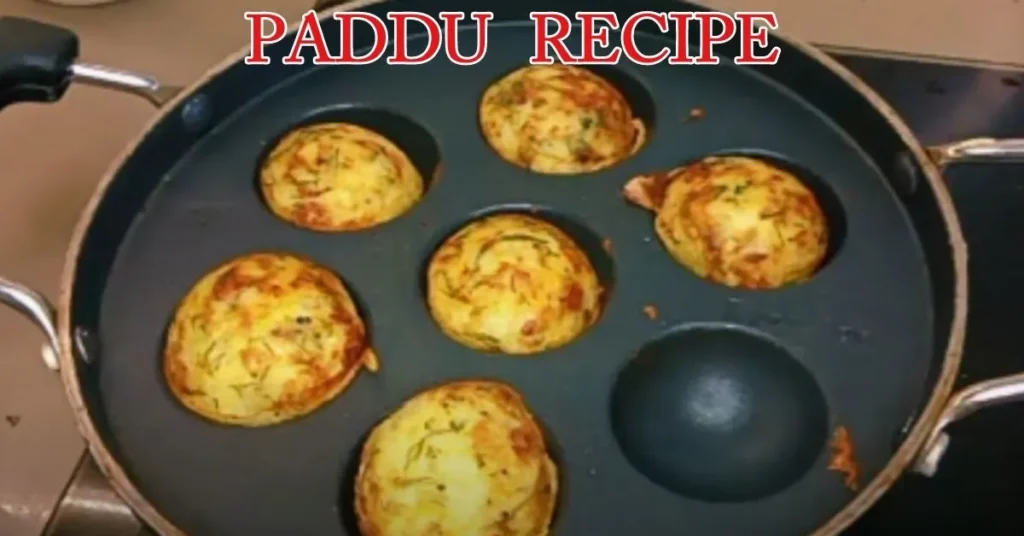Paddu, alias Paniyaram or Gunta Ponganalu, is a beloved South Indian morsel that has captured the taste buds of multitudes with its delectable flavor and distinctive form. Its appeal can be savored across occasions, from early-morning bites to late-night nibbles. The article investigates the fundamental Paddu Recipe preparation method and innovative twists tailored to individual likings.
What is Paddu?
Originating in the Southern states of India, specifically Karnataka and Tamil Nadu, Paddu is a culinary sensation. The item is prepared inside a distinctive pot with several miniature, circular molds, referred to as a paddu pan, Paniyaram pan, or Appe pan. The batters for these South Indian dishes share common ground, yet the paddu batter is infused with spices to create a novel flavor profile.
The Origin of Paddu Recipe
In South Indian culture, Paddu Recipe is an essential component with a long cultural heritage. It is thought to have emerged centuries prior when it was traditionally prepared for celebratory events and family reunions. Conventional preparation of paddu involved utilizing leftover idli or dosa batter, resulting in a thrifty and savory treat.
Ingredients Required
To make a delicious batch of paddu, you will need the following ingredients
Parboiled rice, 1 cup (raw equivalent)
Fourteen percent of a cup filled with urad dal (black gram)
One-quarter of a cup filled with flat rice.
● 1/2 teaspoon fenugreek seeds
● 1 cup sour buttermilk
Minced onion (small quantity).
Chop approximately 2-3 fresh green chilies finely.
A selection of freshly chopped coriander leaves.
Add a minuscule amount of asafoetida or thing, if desired.
● Salt to taste
● Cooking oil
Step-by-Step Preparation
Preparing the Batter
Each of these grains should be rinsed independently under water flow.
Mix the seeds with water, letting them sit for 4-5 hours.
After draining the liquid, process the soaked substance until it forms a uniform paste with additional water. Move the batter to a larger container, mix in sour buttermilk, and ensure a thorough combination.
Provide the batter with ample opportunity to ferment before using it.
Seasoning the Batter
Fermentation brings about changes that make the batter puff up and feel lighter.
Add the chopped ingredients to the batter.
Thoroughly combine all ingredients to avoid any variance in distribution.
Cooking the Paddu
Position the paddu pan over medium heat and add a few drops of cooking oil into each mold.
After heating the oil, fill each mold with a small amount of batter, almost to the top of the mold’s capacity.
Cook the paddys on a moderate heat setting for approximately 2-3 minutes or until the base becomes lightly browned.
Employing a utensil, flip the paddu to achieve proper cooking on both sides.
Cook until both surfaces have been properly seasoned and crunchy.
Variations of Paddu Recipe
Vegetable Paddu
The vegetable version of paddu is ideal for those seeking enhanced culinary interest. By incorporating these three components, you can improve the composition of the batter. The added ingredient heightens both taste and nutritional value.
Rava (Semolina) Paddu
Rava paddu offers an easy alternative that requires minimal effort. Replace these grains with semolina (rava) and yogurt for an alternative cooking method. This version requires minimal soaking and fermentation time.
Spicy Onion Paddu
Spicy onion paddu provides a tempting treat for individuals with a penchant for bold flavors. Mix a substantial amount of finely ground green chilies and red chili powder with the batter. The contrast between the spicy heat and the subtle sweetness of onions is heightened through their partnership.
Serving Suggestions
For the full taste experience, enjoy Paddu straight from the pan. Experiment with complementary coconut, tomato chutney, or spicy sambar for a thrilling taste experience. The coffee and chutney blend exceptionally well, creating a traditional South Indian fusion.
Health Benefits of Paddu Recipe
A delectable dessert like Paddu, comes with added health perks. The dish offers a comprehensive mix of energy-providing carbs, constructive proteins, and vital vitamins. The fermentation step optimizes the consumption of nutrients by enhancing their digestive efficiency.
Tips for Perfect Paddu Recipe
Let the batter rest and develop flavor during fermentation.
The non-stick paddu pan facilitates smooth cooking while reducing the need for oil.
Cook pads on medium-low heat to achieve a crunchy outside and uniform heating.
Conclusion
Every morsel of Paddu Recipe evokes a symphony of sensations and sentimental associations. Its straightforwardness in cooking and the many possibilities for creativity have led to universal popularity. Collect the necessary components, light the tawa, and savor the delectable dish with your near and dear ones.
FAQs
What pan is ideal for cooking paddu?
A specialized pan explicitly designed for preparing paddu or Paniyaram is ideal, featuring small, circular molds.
Can I keep extra paddu for later eating?
Keeping paddu leftovers in an airtight container in the fridge is acceptable. Warm them up in a skillet or using the microwave before consumption.
Is paddu gluten-free?
Confirmation: The conventional paddu preparation utilizing rice and urad dal is naturally gluten-free.
Can I make paddu without adding onions?
Absolutely! You can include or replace onions with alternative ingredients or tastes you desire.
May I employ idli batter to create paddu, or should I adhere to the conventional recipe?
Recycling idli batter yields delicious paddu. Combine all the seasonings required in the recipe and then carry out the remaining cooking process.

